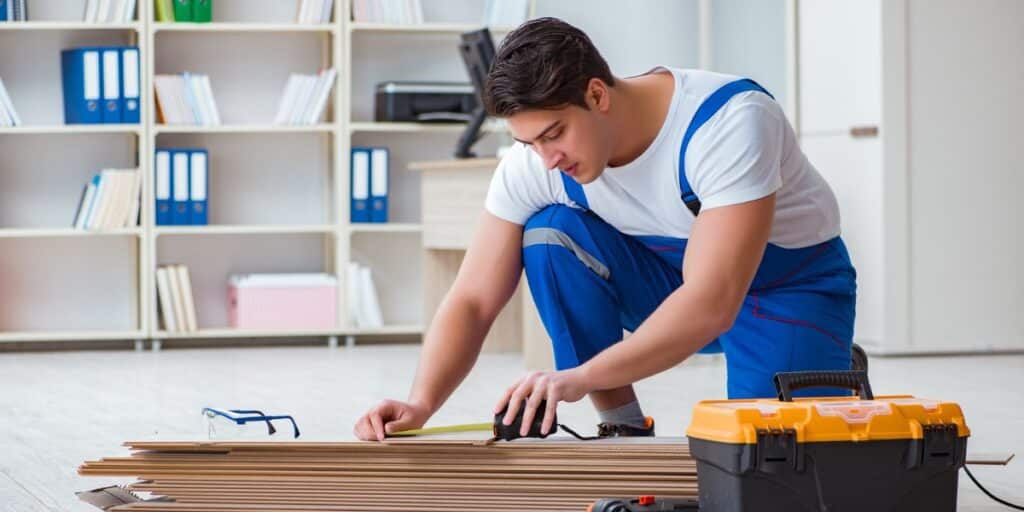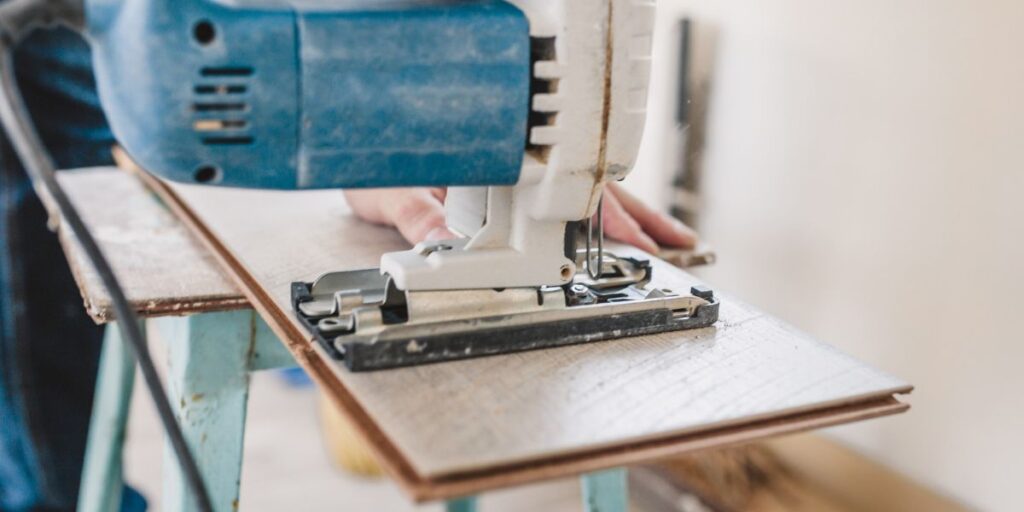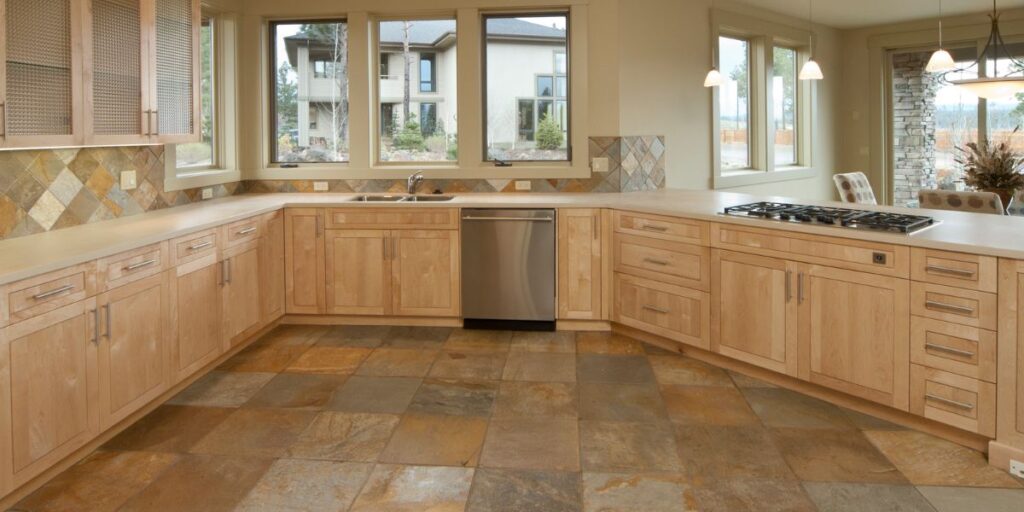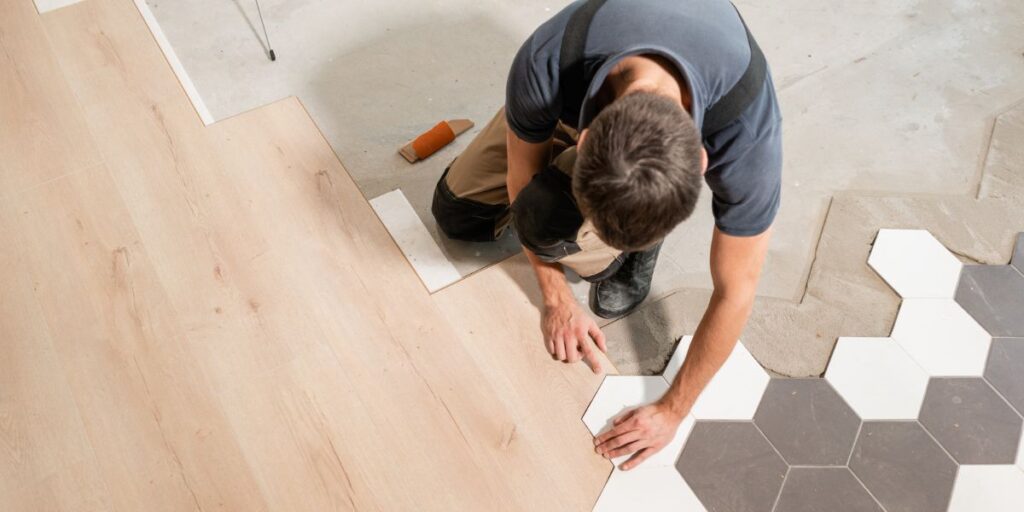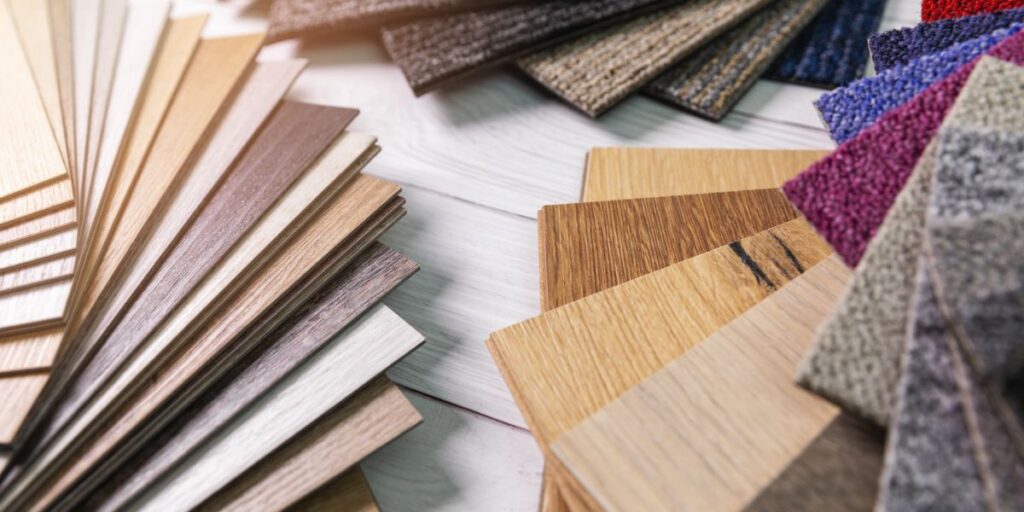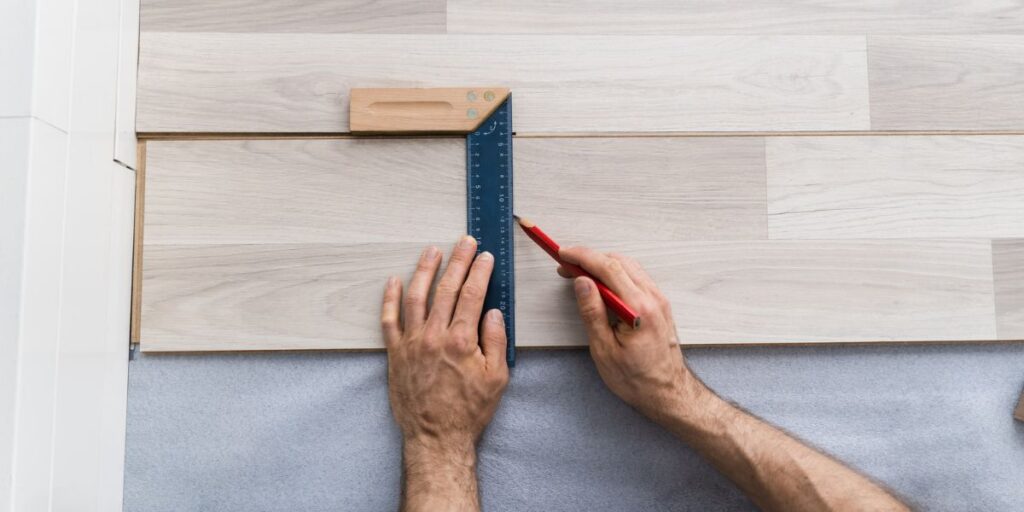
What is Resilient Flooring?
Introduction
Let’s talk about the unsung hero of flooring – resilient flooring. It’s often overlooked, but we give it the attention it deserves. Resilient flooring has existed for over a century, yet many people still don’t know what it is.
So, let me define it for you: Resilient flooring is made from materials that are durable, flexible, and easy to maintain. This type of flooring includes vinyl, rubber, and linoleum.
Definition of Resilient Flooring
Resilient floors are perfect for high-traffic areas because they resist scratches and dents. They’re also water-resistant, which makes them perfect for bathrooms and kitchens.
And let’s remember the variety of styles available! From bold colors to intricate patterns, resilient floors can be designed to fit any interior design aesthetic.
So why is this type of flooring still so overlooked? It’s because people associate resilient floors with cheapness or low quality.
But that couldn’t be further from the truth! Resilient floors have come a long way in design and quality since their inception.
RELATED: Reviving Swollen Laminate Flooring: A Guide to Repair Without Replacement
Importance of Resilient Flooring in Modern Architecture and Interior Design
In modern architecture and interior design, there has been a shift towards more sustainable materials that are both stylish and functional. And resilient floors fit right into that category!
They’re affordable (which means they’re accessible to everyone), easy to install (which means anyone can do it), durable (which means they’ll last for years), and eco-friendly (which means they’re good for the environment). But beyond all those benefits lies one very important reason why resilient floors should be taken seriously in modern architecture – versatility.
They can be used in virtually any room of a home or building. In fact, they’re so versatile that they can even be used in commercial spaces like hospitals and schools.
So let me ask you: why wouldn’t you want to incorporate something so practical and beautiful into your home or building design? It’s time to give resilient flooring the attention it deserves.
Types of Resilient Flooring
If you’re looking for a durable and long-lasting flooring option, then resilient flooring should be on your list. But what exactly is resilient flooring?
It’s a type of flooring that can withstand wear and tear, moisture, and heavy traffic. There are several types of resilient flooring available in the market, and each has its own unique features.
Vinyl Flooring
Vinyl flooring is one of the most popular types of resilient floors available today. It’s affordable, easy to install, and comes in several different designs. Vinyl floors come in sheet form as well as tiles or planks that mimic natural materials such as wood or stone.
One of the advantages of vinyl flooring is its water-resistant properties. This makes it ideal for kitchens, bathrooms, laundry rooms, or any area where moisture may be present.
Vinyl floors also resist scratches and stains, which means they’re great for high-traffic areas such as entryways and hallways. However, vinyl floors do have some disadvantages.
They’re not suitable for outdoor use, nor can they be refinished like other types of floors. Additionally, certain chemicals may discolor or damage the surface if left on too long.
Rubber Flooring
Rubber flooring has been growing in popularity over recent years due to its sustainability and durability attributes. It’s made out of natural rubber, which makes it non-toxic and chemical-free compared to other synthetic materials used in traditional floorings.
Rubber floors have excellent shock-absorbing qualities, making them perfect for gymnasiums or play areas where children are likely to fall or jump around without getting hurt. They also have sound-muffling properties, which make them ideal for apartments or multi-level buildings where noise reduction is important.
One disadvantage of rubber floors is their susceptibility to fading when exposed to sunlight. Additionally, rubber can stain from certain substances such as oils, and it’s not recommended for areas where heavy furniture may be placed.
Linoleum Flooring
Linoleum flooring has been around for over a century but has recently gained popularity due to its eco-friendly properties. It’s made from all-natural materials such as linseed oil, cork powder, and wood flour, making it biodegradable and renewable.
One of the unique features of linoleum is that it can be cut into intricate designs or patterns that give you more customization options than other floors on this list. Additionally, it has antistatic properties, which make it easy to clean and maintain.
However, linoleum floors are vulnerable to scratches which can dull the surface finish over time. They’re also prone to fading when exposed to direct sunlight or extreme temperatures.
Linoleum flooring is not suitable for homes with pets or heavy furniture as it may damage the surface easily. Each type of resilient flooring has its own pros and cons, depending on your personal preference and needs.
Vinyl floors are great for water-resistant areas, while rubber is perfect for high-traffic zones. And if you want an eco-friendly option that gives you maximum design flexibility, go for linoleum!
Benefits of Resilient Flooring
Durability: Is it worth it?
One of the main advantages of resilient flooring is its durability. When you invest in a resilient floor, you can expect it to last for many years to come, as long as it is properly installed and maintained.
One factor that affects the lifespan of your floor is foot traffic. High-traffic areas like hallways and entryways will naturally experience more wear and tear than low-traffic areas like bedrooms.
Another factor that can affect durability is exposure to sunlight or moisture. If your floor is exposed to direct sunlight or excessive moisture, it may deteriorate faster over time.
Ease of Maintenance: Cleaning Made Easy
Another benefit of resilient flooring is its ease of maintenance. Unlike carpet or hardwood floors which require regular deep cleaning, resilient flooring can be easily cleaned with a mop and a simple cleaning solution.
Regular sweeping and mopping will help keep dirt and debris from accumulating on the surface, preventing scratches or scuff marks from forming over time. You should clean your resilient floor at least once a week with a neutral pH cleaner recommended by the manufacturer.
Affordability: A Wise Investment Choice
Resilient flooring is also an affordable option compared to other types of flooring, such as hardwood or tile. While the initial cost may be higher than carpeting, in terms of long-term value, it offers a better return on investment due to its durability and low maintenance costs over time.
Sustainability: An Environmentally-Friendly Choice
Resilience flooring has become increasingly popular due to its sustainability features. Many manufacturers use recycled materials such as rubber or vinyl in their products which lessens waste and environmental impact while still providing high-quality materials for homeowners who want an eco-friendly option for their home renovation needs.
Overall, resilient flooring presents a practical and affordable flooring solution offering durability, low maintenance, eco-friendliness, and longevity. For homeowners with busy lifestyles or who want to invest in a long-term flooring solution, resilient flooring is the perfect choice.
Resilient Floor Installation Process
Preparation before installation
Installing resilient flooring isn’t a walk in the park. It requires plenty of preparation before you even begin to think about laying your first tile. One of the most important things to do is to prepare the subfloor.
This means removing any debris, smoothing out bumps, and filling in holes or cracks. If you’re not a DIY enthusiast, this might be a good time to call in professional help.
Another key aspect of preparation is acclimatizing your floors. You must ensure that they are stored in the room where they’ll be installed for at least 48 hours before installation.
This allows them to adjust to the room’s temperature and humidity levels. Failure to do so could lead to expansion or shrinkage after installation, which would ruin all your hard work.
Tools needed for installation
To get started with resilient floor installation, you’ll need several tools at your disposal. First on the list is a measuring tape, which will help you determine how much material you’ll need for your project.
A chalk line is also necessary for marking out straight lines on your subfloor. Next up are cutting tools such as a utility knife or shears and a circular saw for more precise cuts.
A notched trowel will come in handy when spreading adhesive evenly on the subfloor, while a roller will help smooth out any bubbles beneath each tile. Safety equipment such as gloves and eye protection should never be overlooked when working with tools.
Step-by-step guide on how to install resilient floor
Before starting off with laying tiles, make sure that adhesive has been applied over the entire surface using a notched trowel, ensuring that it covers all areas evenly without leaving any spots exposed because it can lead to uneven backings after installing tiles. Starting from one corner, lay the first tile down and press it firmly into the adhesive. Once you’ve placed your first tile, add spacers between each subsequent tile to ensure even spacing.
This will help maintain the consistency of your flooring. Before adding any more tiles, use a roller to apply pressure on each tile to ensure that it bonds well with the adhesive beneath.
Continue this process until all tiles have been placed. Once all tiles have been laid down and allowed to dry for at least 24 hours, you can remove all spacers from between them.
This will reveal a beautifully installed resilient floor that’s ready for foot traffic. That’s it!
Following this step-by-step guide should make installing resilient floors a lot easier and less stressful. Remember, preparation is key, so take your time and don’t rush things.
Maintenance Tips for Resilient Floors
Don’t Skimp on the Cleaning
Resilient flooring is no different from any other type of flooring. It requires proper maintenance to keep it looking new. If you don’t clean it regularly, dirt and grime will build up, causing discoloration and damage to its surface.
Make sure to sweep or vacuum your resilient floor daily to get rid of loose dirt and dust. Use a damp mop with a mild cleaning solution at least once a week to remove stubborn stains.
Avoid Harsh Chemicals
Many people make the mistake of using harsh chemicals to clean their resilient floors because they believe that it will be more effective. However, this couldn’t be further from the truth.
Harsh chemicals can damage the surface of your resilient floors and compromise its longevity over time. Instead, use gentle cleaning solutions specifically designed for resilient flooring.
Protect Your Flooring from Scratches
The best way to maintain your resilient flooring is by preventing scratches in the first place. Place felt pads under furniture legs and avoid dragging heavy items across the floor as much as possible. This simple step can go a long way in preventing wear and tear on your beautiful new floor.
RELATED: Paint Be Gone: Creative Methods for Removing Paint from Vinyl Flooring
Cleaning Tips to Keep Your Floor Looking New
Baking Soda Magic
Baking soda is one of those versatile household items that can be used for just about anything—including cleaning your resilient floors! Mix baking soda with warm water into a paste-like texture and apply directly onto tough stains. Let sit for 5-10 minutes before wiping away with a soft cloth.
Get Rid of Grease Stains with Vinegar
Vinegar is an excellent natural cleaning agent that helps break down grease stains on resilient floors quickly. Dilute equal parts of vinegar and warm water into a spray bottle, and apply generously onto stubborn stains. Let sit for five minutes before wiping it away with a damp cloth.
Deep Cleaning With Floor Machines
If your resilient flooring has heavy-duty grime build-up that can’t be removed through regular cleaning, consider using a floor machine. Floor machines are specifically designed to deep clean hard surfaces, including resilient floors. However, be sure to follow manufacturer instructions carefully to avoid damaging your floors.
Frequently Asked Questions
Why is it called resilient flooring?
Resilient flooring is called so because it has the ability to flex and return to its original shape under pressure, providing a durable and comfortable surface that can withstand impact and foot traffic without significant damage or deformation.
What is a resilient hard flooring example?
An example of resilient hard flooring is luxury vinyl plank (LVP) or luxury vinyl tile (LVT). These flooring types are designed to mimic the appearance of hardwood or stone while offering resilience, durability, and easy maintenance.
Is resilient flooring the same as vinyl?
Yes, resilient flooring is often used interchangeably with the term vinyl flooring. Both refer to flooring materials that are flexible, durable, and resilient in nature.
What is resilient vs. non-resilient flooring?
Resilient flooring, such as vinyl, linoleum, or rubber, is characterized by its ability to bounce back or recover from pressure or impact. Non-resilient flooring, on the other hand, includes materials like ceramic tile, stone, or porcelain, which are rigid and do not have the same flexibility or cushioning properties.
Is resilient flooring waterproof?
Resilient floorings, like vinyl or linoleum, are highly resistant to water and moisture. While it is not entirely waterproof (as excessive water exposure can still cause damage to the subfloor), it offers a higher level of water resistance compared to many other flooring types.
What is the most resilient flooring?
Luxury vinyl plank (LVP) or luxury vinyl tile (LVT) is often considered the most resilient flooring. It combines the benefits of durability, moisture resistance, and comfort, making it suitable for high-traffic areas and areas prone to moisture, such as kitchens, bathrooms, and basements.
Conclusion
Maintaining your resilient flooring doesn’t have to be complicated or time-consuming. By following simple cleaning and maintenance tips, you can keep your floor looking brand new for years to come.
Don’t forget that investing in high-quality resilient flooring is one of the best decisions you can make for your home or office space. With its long-lasting durability, easy maintenance, and affordability, it’s no wonder that resilient flooring has become such a popular choice among homeowners and designers alike.

